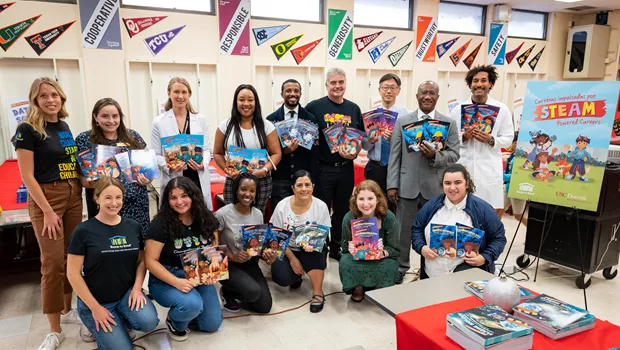This blog post was originally published as part of the Literacy in America editorial campaign, supported by USA Today.
It is difficult to accept the fact that only 35% of fourth graders in the United States read at or above a proficient level. Despite its vast wealth, the U.S. is one of the most unequal countries in the world. A history of systemic and systematic racial and economic oppressions means that learning opportunities are not equitably distributed. Most of the children who are not proficient readers in grade four come from underserved families, and poverty has both racial and demographic dimensions, with higher rates of poverty found amongst communities of color and rural communities.
How can we make functional literacy—the ability to participate in society through foundational reading and writing skills — a reality for every child in the U.S.? Increasing access to a diverse collection of high-quality books is a place to start. Learning any new skill requires motivation and an enabling environment. With access to engaging books, children are inspired with a desire to read, and their reading levels are much more likely to improve when books are present in the home. The need for books is exceptionally strong in high-poverty neighborhoods, where age-appropriate books are scarce – some having only one book for every 830 children. If something as basic as a book is not universally available, it is no wonder that literacy skills remain out of reach for so many children.
Beyond having access to books, diverse representation within children’s book collections matters. Children are motivated to read when their own experiences are validated by being reflected from the pages of a book. This was apparent during the distribution of Room to Read’s 10-book collection of diverse books about peace and equality to elementary school children in California, when Black children excitedly gravitated towards books with Black characters on the cover.

The U.S. suffers from a significant lack of high-quality, authentic children’s books that represent people from underserved communities. For instance, there are 10 times more books published that feature animals and objects as a primary character than there are that feature disabled children as a primary character. This poses a problem - when children never see themselves represented in a book, they can feel that reading is part of an exclusive club to which they do not belong. Books are windows to the world, and book collections that do not represent the wide diversity of humanity depict a skewed view of the world.
To support children with the motivation to read, and to provide an enabling environment for them to develop their literacy skills, we must ensure that all children, regardless of their family’s income, have access to a diverse collection of children’s books. The collection should contain both fiction and nonfiction books that delight, inform, inspire, and engage its readers, and it should represent the perspectives and experiences of people from diverse communities.
Since children are first introduced to books by adults who can serve as reading role models, caregivers and educators should be trained in how to best support children to develop both literacy skills and a love of reading. Adults can act as gatekeepers to children’s literature and should know that, not surprisingly, children who can choose what they read and have informal environments in which to enjoy reading tend to be more motivated readers. Ultimately, a good book that will help a child develop their literacy skills is one that they desire to read. A diverse book collection increases the chances that every child will find books that interest them, bringing them a step closer to becoming proficient readers and lifelong learners.



